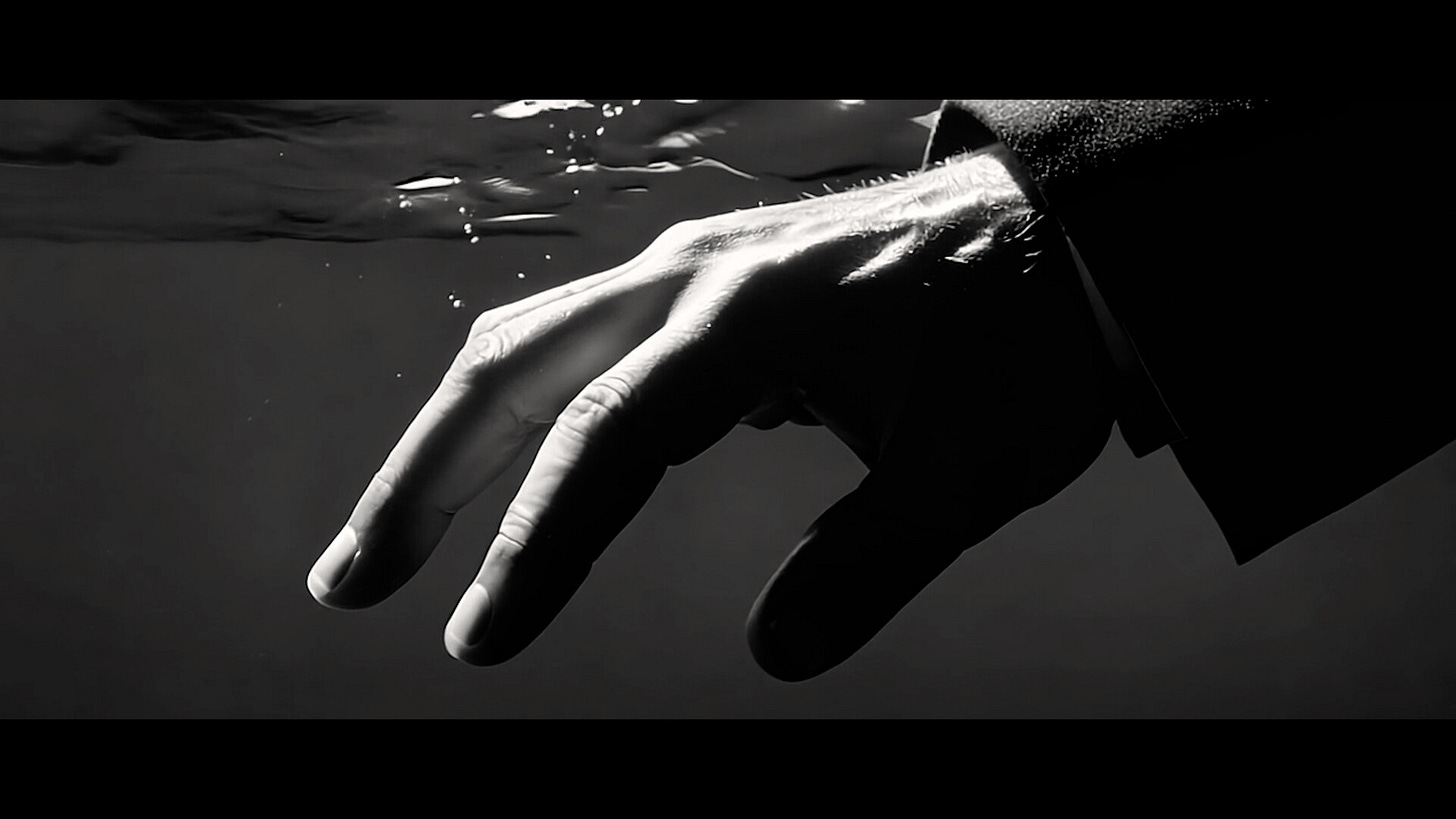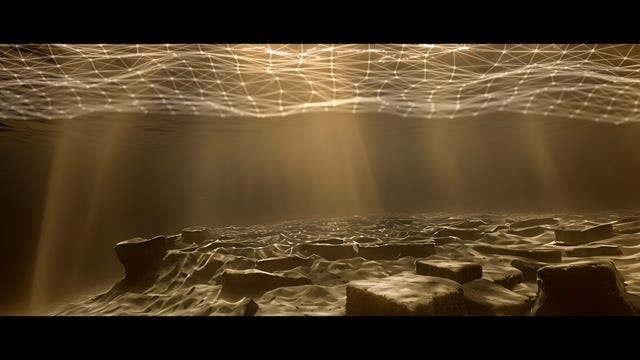Prayer of the Sea, Martin Gerigk’s newest film, feels as if it simply washes into our consciousness, like the ocean waves which form the principle imagery. It has the organic inevitability of a film which grows into existence, as a crystal or a plant grows. (Both crystals and aquatic plants are prominent parts of the film as well.) There is a foundational reason for this organic quality: the film is an outgrowth of a dream Gerigk had decades ago, a dream in which he heard an adagio for string quartet. Upon waking, he transcribed this music, note for note, and it forms the soundtrack for the film. The music is a direct message from Gerigk’s dreaming mind. The film’s imagery, which centers on a man in formal attire who stands on the seashore, contemplating the waves, is a cinematic rendering of the dream’s imagery and emotional quality.
The quartet begins slowly, with isolated, quiet chords, isolated musical motifs which are surrounded by silence. These wave-like musical gestures gently bubble up from the silence, like water emerging from underground. Slowly, inevitably, these musical fragments begin to surge up higher, in long, cascading phrases which drift in and out of tonality, sometimes plaintively, lyrically wandering around the minor mode, sometimes opening up into unexpected vistas of new keys, or into dissonances. Interestingly, these dissonant moments are generally linked to the appearance of strange, monumental crystalline structures which appear in the water. Small glissandi, notes which slide unexpectedly up or downwards, are often linked with shots of underwater rocks and seaweed. At the end of the seven minute film, the musical waves are once again sinking into silence.
There are no dramatic events in this calm, meditative musical poem. The man stands, looking at the beauty of the waves. He feels drawn to the waves; leaning down to dip his hand into the water. Throughout the film, he is gradually drawn towards immersing himself and finally disappearing into the flowing motion of the water.
In the manner of all poetry, the imagery in the film is multifaceted, shimmering with multiple meanings. Gerigk subtly superimposes mathematical wave forms, sine waves and white networks of floating points onto the water. This might be a reference to the connection between music, sound waves, the ocean, and the wave-like nature of all energy. One can see it as a reference to consciousness, the interplay between our minds and what we are perceiving. By emphasizing the wave qualities of both mind and ocean, Gerigk emphasizes the fundamental unity of all creation: the mind-stuff and the world-stuff are one and the same. The man’s urge to merge with the waves is the urge to return to this state of oneness with the universe.
The glass, crystalline structures are another image with multiple meanings. In nature as in technology, crystals can serve as powerful nodes, capable of focusing and transforming energy. But, in some places in the film, they are depicted specifically as frozen wave forms. They may refer to parts of the man’s spirit that are frozen, congealed, overly intellectual, and he longs for these frozen parts of himself to thaw, and be allowed to re-join the universal flow. The underwater plants can be seen as living forms which thrive in the flowing world of the water, and the camera lingers lovingly as well on the shafts of sunlight, penetrating beneath the waves, filling them with energy and illumination. Later, the glass-like frozen objects are transformed into open, airy geodesic bubbles, light and floating in air.
Slowly, gently, the film’s imagery and music grow on us, reinforcing this sense that everything is flowing together. The seeming polarities: sound vs. silence, frozen vs. liquid, mind vs. matter, all rise and fall together, with a gentle, wave-like rhythm. The film’s footage is subtly placed into floating, overlapping frames, which expand and drift, like a moment observed from multiple angles, yet at times the frames expand out to the edges, as the man’s consciousness expands into his surroundings. In one transcendent moment, the music cascades upwards to a higher register, and the man himself is lifted up into the air, only to come gently to rest in the water, as the musical phrase subsides once again.
The editing rhythm closely follows the phrasing and pulse of the music, again emphasizing the unity of image and sound. The organic, flowing quality of the film’s structure encourages us, like the man in the film entering the water, to simply immerse ourselves in the film’s flow, and enjoy the lullingly sensuous quality of its undulations. The film is like a kind of magic gift, expressing fundamental realities that cannot be expressed in words. It’s like the answer to a prayer.
My articles on experimental film are freely available to all, but are supported by monthly and annual donations from readers. Please consider becoming a paid subscriber to support my work. Thank you.










Amazing trailer. Thanks, David and Martin.